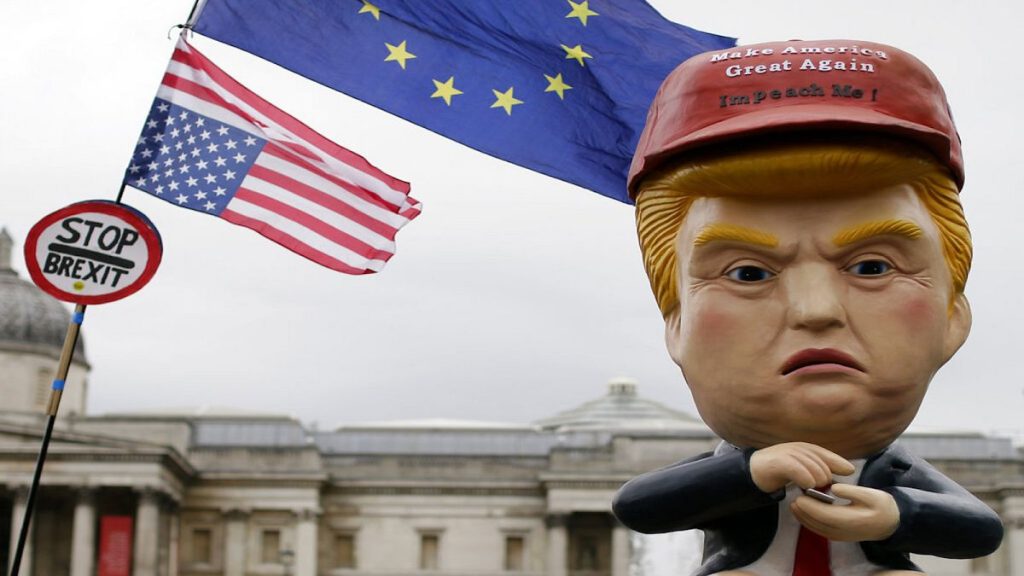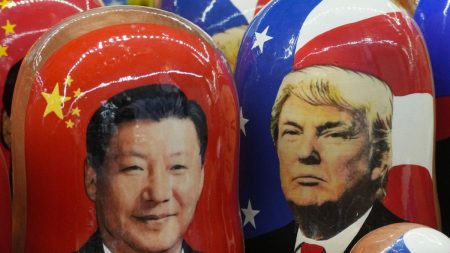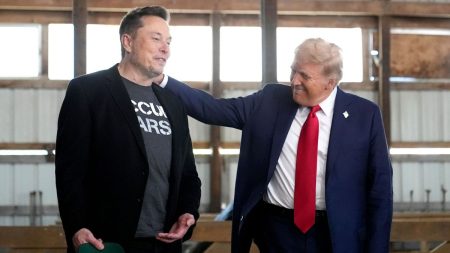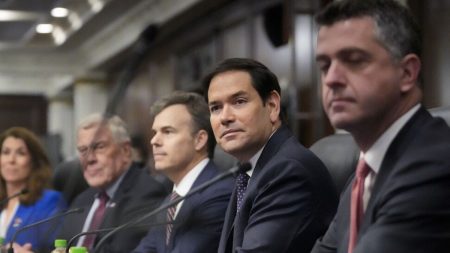The recent pronouncements by former US President Donald Trump regarding potential trade tariffs against the European Union and the United Kingdom have injected new uncertainty into the transatlantic economic landscape. Trump’s characterization of the EU’s €300 billion trade surplus with the US as an “atrocity” underscores his long-standing grievances with the bloc’s trade policies. He asserted that tariffs against the EU were “definitely” on the horizon, extending the threat to the UK as well, although he suggested a more conciliatory approach towards the latter, citing a positive relationship with then-Labour Party leader Keir Starmer. This stance creates a complex dynamic, potentially straining the already delicate relationship between the EU and the UK as the latter navigates its post-Brexit identity and seeks to redefine its trade relations with both the US and the EU.
Trump’s comments came just ahead of Starmer’s visit to Brussels, where he aimed to reset the UK’s relationship with the EU and forge a strong trade partnership. Starmer emphasized his focus on establishing a robust trade relationship with the US, highlighting his early discussions with Trump as centered on this objective. This emphasizes the UK’s desire to balance its transatlantic relationships, seeking strong economic ties with both the US and the EU in the wake of Brexit. However, Trump’s volatile pronouncements on trade inject considerable uncertainty into these endeavors, potentially complicating the UK’s efforts to secure favorable trade agreements with both parties.
Trump’s broader perspective on international trade paints a picture of the US being exploited by other nations. This “America First” rhetoric has been a consistent theme throughout his presidency, underpinning his justification for imposing tariffs on various countries. His assertion that the US has been “ripped off” by virtually every country underscores his protectionist stance and his willingness to utilize tariffs as a tool to address perceived trade imbalances. This perspective has led to significant friction with traditional allies and trading partners, including Canada, Mexico, and China, as evidenced by the tariffs imposed on imports from these countries just prior to his pronouncements on the EU and the UK.
The tariffs imposed on Canada, Mexico, and China, signed into effect at Trump’s Florida resort, sent shockwaves through the global trade system. The move ignited a mix of panic, anger, and uncertainty among businesses and governments alike. The tariffs threatened to dismantle the long-standing North American Free Trade Agreement (NAFTA) and further escalate trade tensions with China. This action signaled Trump’s commitment to his aggressive trade policies, demonstrating a willingness to disrupt established trade relationships in pursuit of what he perceived as fairer trade practices for the US. While acknowledging the potential for “some pain” for Americans as a result of the escalating trade war, Trump appeared unyielding in his pursuit of these policies.
The implications of Trump’s trade policies extend beyond the immediate economic impact. His actions have introduced significant instability into the global trading system, creating uncertainty for businesses and investors. The potential for retaliatory tariffs from affected countries could escalate trade tensions and further disrupt global supply chains. Furthermore, his approach to trade has strained relationships with key allies, potentially undermining international cooperation on other critical issues.
In conclusion, Trump’s pronouncements regarding potential tariffs on the EU and UK, coupled with his imposition of tariffs on Canada, Mexico, and China, represent a significant escalation of his trade agenda. His actions have injected uncertainty into the global trading system, strained relationships with key allies, and raised concerns about the long-term implications for international trade and cooperation. The unfolding trade war, fueled by Trump’s protectionist policies, has the potential to reshape global economic relationships and create lasting economic and political consequences. While the specific outcomes remain to be seen, the current trajectory suggests a period of increased trade tensions and a potential reconfiguration of the global trade landscape.













